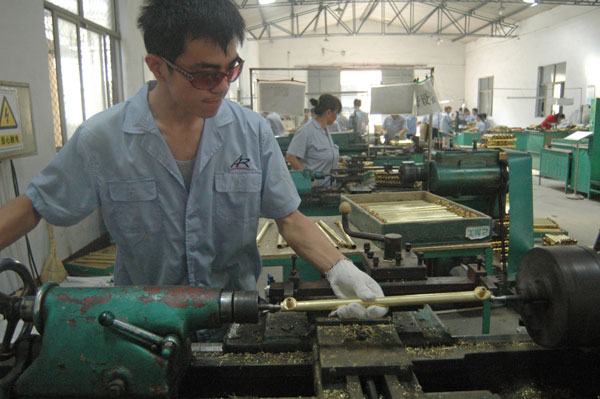Potters need creativity to flourish
Updated: 2015-08-14 08:53
By Peng Yining(China Daily Africa)
|
|||||||||||
Jessie Lee believes China's long history of ceramics is both a cause for celebration and a curse for the country's contemporary artists.
"How can they surpass the peak that people achieved during the Tang (AD 418-907) and Song (960-1279) dynasties? Sometimes when you are too good at something, you may be afraid to make new things. Many of the works I saw in Jingdezhen were imitations of ancient works," the Malaysian-born British ceramics artist says.
"In the UK, we don't have that much history and tradition (of ceramics), so it is easier for us to create and innovate. I think China's ceramic artists should also investigate new approaches and fully embrace new technology."
Wang Yuwei is studying for a master's degree in architecture and ceramics at University College, London. The 24-year-old student says teachers in the UK encourage experimental projects and the use of new materials.
She and two other Chinese students are working on making ceramic components with a robotic arm. They have adapted an arm, originally used to weld automobile parts, to squeeze out clay and make different-shaped coils.
"It is faster and more accurate. It's cutting-edge ceramic technology," Wang says. "I didn't know about this before I came to the UK. It's still very new in China."
Using digital technology doesn't mean rejecting craftsmanship, according to Guan Lee, Wang's tutor at the college. "The technology helps us make shapes we can't make by hand. With digital tools, we can realize our designs," he says. "Many ceramics artists come to my studio to learn about different technologies, including 3D printing."
In 2013-14, ceramics artist Mia Sarosi taught at a college in the UK. She says her students from China and other parts of Asia weren't used to working individually and expressing their ideas and opinions without reserve.
"They said that they were more accustomed to being told what to do, so it was strange for them to have the opportunity to do whatever they wanted for their art projects," Sarosi says. "However, they all rose to the challenge. I gave them lots of opportunities to discover their individual interests. They all ended up with diversely different projects, so I think it worked."
Li Wenying, manager of a private ceramics arts center in Jingdezhen, Jiangxi province, says China could learn a few lessons from the UK's education system.
"Most colleges, even primary schools, have ceramics classes. Galleries and ceramics events are very common. If you are interested, you can train as an artist from very young age," she says. "We don't have a similar culture in China."
When she visited the International Ceramics Festival held in Aberystwyth, Wales, she was impressed by the passion shown by the devotees. "People were dancing, drinking and firing porcelain at the event. Artists were working together and exchanging ideas. It was like a big party for lovers of ceramics," she says. "We have a ceramics festival at Jingdezhen, but it's usually very formal and few artists participate."
Having worked with British artists and galleries for more than 10 years, Li says most of them were passionate about what they were doing. By contrast, the potters in Jingdezhen follow the market instead of their hearts.
"Now the wood-burning kiln is popular. Even an ordinary teacup fired by wood could be priced at more than 1,000 yuan ($155; 139 euros). Suddenly, there are wood-burning kilns everywhere in the city," she says. "There's nothing wrong with making money, but the high reputation of Chinese ceramics is based on its understated taste and superb quality."
(China Daily Africa Weekly 08/14/2015 page7)
Today's Top News
China probes into Tianjin blasts, experts focus on chemicals
Yuan stabilizes after central bank reassures markets
PBOC promises effective steps for yuan stability
British foreign secretary in Beijing to prepare for President Xi's visit
Greece announces deadlines for port, railway privatization tenders
Turkey's early elections 'decidedly possible': PM
Death toll rises to 50, military sends chemical specialists to blast site
12 firefighters among 44 killed in explosions
Hot Topics
Lunar probe , China growth forecasts, Emission rules get tougher, China seen through 'colored lens', International board,
Editor's Picks

|

|

|

|

|

|






